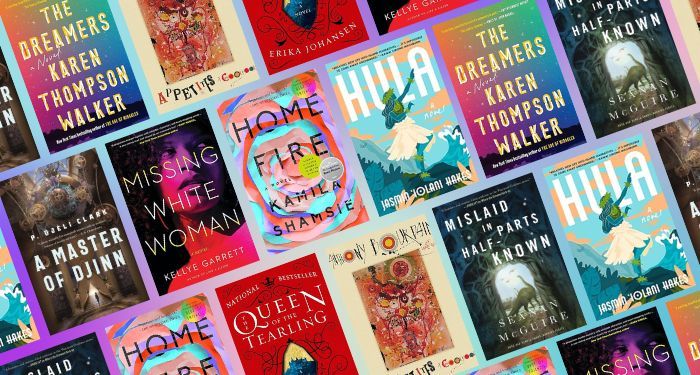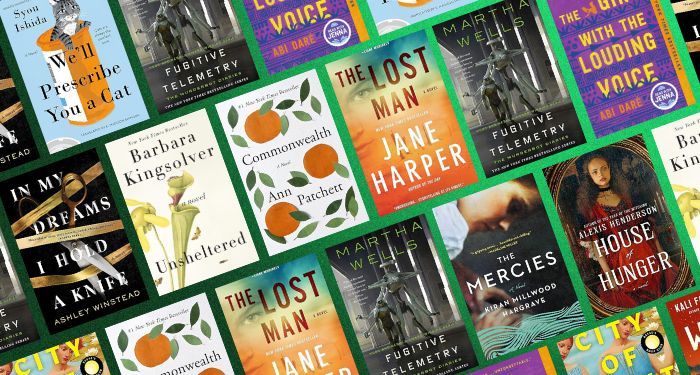 Most writers understand that strong character goals are essential to a compelling story. But did you know that within every plot, three distinct types of goals shape every character’s journey? These are fundamental, primary, and secondary goals. In exploring these character goal examples for writers, you can gain a clearer understanding of how character, plot, and theme work together seamlessly. Inspired by Robert Fritz’s concept of human choice-making, these three types of goals offer a practical framework for crafting characters whose decisions resonate deeply with readers.
Most writers understand that strong character goals are essential to a compelling story. But did you know that within every plot, three distinct types of goals shape every character’s journey? These are fundamental, primary, and secondary goals. In exploring these character goal examples for writers, you can gain a clearer understanding of how character, plot, and theme work together seamlessly. Inspired by Robert Fritz’s concept of human choice-making, these three types of goals offer a practical framework for crafting characters whose decisions resonate deeply with readers.
At the heart of every memorable story is a character driven by choices. Some of those choices are grand and overarching, others are small but significant. Robert Fritz’s framework (found in his book The Path of Least Resistance: Learning to Become the Creative Force in Your Own Life) identifies three types of choices we all make in real life. As writers, this can help us better understand the cause and effect of our characters’ motivations and plot actions, not only to discover their most prominent plot goals, but to also understand the deeper motivations and perspectives driving those goals.

The Path of Least Resistance by Robert Fritz (affiliate link)
As defined by Fritz:
Fundamental choices define who characters are at their core Primary choices shape characters’ immediate journeys. Secondary choices influence the actions characters take along the way.Understanding these layers allows you to build characters whose desires, conflicts, and growth feel authentic, providing a solid foundation for powerful storytelling.
More than that, we can see a parallel between each of these layers and the three most important engines of story: plot, character, and theme. Each of Fritz’s “choices” corresponds to one of the “Big Three.”
In This Article:
The Three Different Choices That Create Character Goals The Fundamental Choice = Your Story’s Theme Fundamental Character Goal Examples for Writers The Primary Choice = Your Story’s Character Arc Primary Character Goal Examples for Writers The Secondary Choice = Your Story’s Plot Secondary Character Goal Examples for WritersThe Three Different Choices That Create Character Goals
When crafting strong character goals, it’s important to recognize not every choice characters make carries the same weight. Fritz’s framework of fundamental, primary, and secondary choices provides a practical guide for writers looking to create well-rounded characters. Each type of choice serves a distinct purpose, establishing characters’ core identities and driving their moment-to-moment decisions. Let’s break down each of the three choices to examine how they work together to create dynamic characters.
1. The Fundamental Choice = Your Story’s Theme
On his website, in an article titled “The Fundamentals,” Fritz says:
There is [a] type of choice upon which all other choices rest, and that is the fundamental choice….
Fundamental choices are about orientation, states of being, the ground you stand on. There are four major fundamental choices we recommend to people. They are:
The choice to be healthy The choice to be free The choice to be true to yourself The choice to be the predominant creative force in your own lifeAs the foundation of the other choices, the fundamental choice is the underlying motivation for all subsequent choices and actions. Think of it as your characters’ prime directive. This is their guiding principle, their deepest reason. As such, it can sometimes be buried so deeply, it isn’t consciously obvious even to themselves.

Writing Your Story’s Theme (Amazon affiliate link)
The fundamental choice will usually align with the deepest and most thematic layers of the Lie the Character Believes and/or the story’s thematic Truth or the Thing the Character Needs. Most likely, it will exist on an abstract level. For example, if a story’s thematic Truth is Fritz’s “choice to be free,” characters may not be conscious of it as such. Rather, they may personally frame this thematic Truth as something more practical to their specific lives such as, “I choose not to submit to my tyrannical boss.”
Of course, this practical, more specific choice could also be the emergent of a different fundamental choice (i.e., it could emerge from any of the fundamental choices cited by Fritz). This is where we start to discover the wonderful complexity available within the seemingly simplistic concept of a story’s Lie/Truth. Even though life seemingly points to only a very small handful of absolute Truths (all of which are abstract to at least a certain degree), the ways they can play out in the specifics of individual lives and stories is infinite.
Note, too, that in contrast to Fritz’s examples, a character’s fundamental choice need not always be a positive representation of a story’s Truth. It may just as likely represent the Lie itself, such as when a pessimistic character bases subsequent choices on a fundamental belief in the worthlessness of society. It is also possible that characters who hold positive fundamental Truths will have to work through Lies manifesting on lower levels that are holding them back from fully embodying the positive choice. This might be the case with a character whose positive fundamental goal is to be free, but who holds a lower-level Lie, for example, that “aggression is the only way to escape.”
Fundamental Character Goal Examples for Writers
Band of Brothers: The soldiers’ fundamental goal is to serve their country and what they believe is the greater good. This is based on their fundamental choice to be loyal to each other and committed to their duty no matter the cost. This is their core state of being—brotherhood and honor above all.

Band of Brothers (2001), HBO.
Pride & Prejudice: Although largely in a reactionary role throughout the story, Elizabeth Bennet’s plot goals emerge from her fundamental choice to stay true to herself and her values, prioritizing integrity and genuine connection over societal expectations.

Pride & Prejudice (2005), Focus Features.
Coming to America: Prince Akeem’s fundamental goal of honoring true love is based on the fundamental choice to be true to himself and find genuine love, rather than simply fulfilling royal expectations.

Coming to America (1988), Paramount Pictures.
2. The Primary Choice = Your Story’s Character Arc
 In The Co-Creation Handbook, Alida Birch describes the primary choice like this:
In The Co-Creation Handbook, Alida Birch describes the primary choice like this:
A primary choice is a choice which supports the fundamental choice. For example, if happiness is one of your fundamental choices, then you might take time out from your usual routine to do something that reminds you of your choice to be happy. Or you might choose to be employed in a meaningful job thereby fulfilling your fundamental choice to create a purposeful life. Or you might choose to commit to a more healthful diet to support your fundamental choice to be healthy.

Writing Archetypal Character Arcs (affiliate link)
The primary goal that results from this choice will likely represent your story’s overall plot goal. This is the Thing Your Character Wants, which will motivate all subsequent actions in the plot. For example, if a character’s fundamental goal is to be free, then the primary goal—the plot goal—might be to overthrow the tyrannical boss and restore worthy leadership to the company (a Queen Arc!).
Depending on the type of character arc your story features, the primary goal can ultimately be aligned with either the Lie or the Truth. As mentioned above, even if your characters hold a positive fundamental goal, the primary goal might still represent the foundational Lie they must overcome in order to be successful in achieving the worthy purpose represented by the fundamental choice. For example, in a different story, a character with the positive fundamental goal of freedom might have to work through a misaligned primary goal resulting from a Lie such as “the only way I can assure my own freedom is to control others.”
In most stories, the Thing the Character Wants (and therefore the primary goal) will start out aligned with the Lie. This doesn’t necessarily mean the Want itself is negative, but it does mean the characters must learn to adapt more effective and positive primary goals on their way to gaining (or sometimes giving up) the Want.
Primary Character Goal Examples for Writers
Band of Brothers: The soldiers’ fundamental commitment to their duty translates into the more specific plot concerns of doing their part as paratroopers and, hopefully, winning the war. Each episode in the story focuses on a specific primary goal—usually various missions, such as Normandy, Market Garden, and Bastogne—that support the larger fundamental goal. Each soldier chooses to endure the hardships of war—physical exhaustion, fear, and loss—because of their commitment to each other and the mission.

Band of Brothers (2001), HBO.
Pride & Prejudice: Elizabeth makes difficult primary choices based on her fundamental commitment to her own values and integrity. She chooses not to marry for convenience or wealth, even when pressured, because it would compromise her self-respect and beliefs. She also demonstrates how primary goals can evolve over the course of the story: as her perspective of Mr. Darcy becomes more accurate, she alters some of her specific decisions while coming into deeper integration with her higher Truth (e.g., she initially rejects Darcy’s proposal of marriage, but then changes her mind).

Pride & Prejudice (2005), Focus Features.
Coming to America: Prince Akeem solidifies his fundamental goal of marrying for love into the specific plot goal of traveling to Queens, New York, and pretending to be a poor immigrant in order to find a partner who loves him for himself rather than his wealth or status.

Coming to America (1988), Paramount Pictures.
3. The Secondary Choice = Your Story’s Plot
Fritz explains the secondary choice:
Once we know what is primary… we may need to make strategic secondary choices in support of our primary choice. If we want to create health, we may need to make a series of secondary choices such as eat a healthy diet and exercise. We might not make these secondary choices if we didn’t have health as a primary choice, but we gladly do them when we know our higher order organizing principle: in this case health.
Secondary goals are where things get real. If the fundamental goal is a nice abstraction and the primary goal is a specific intention, the secondary goal is the determination of actionable steps that can be taken in pursuit of those higher-order goals.

Structuring Your Novel: Revised and Expanded 2nd Edition (Amazon affiliate link)
Within a story, these are the scene goals. This is where and how plot unfolds on a moment-to-moment basis within the story (which is also what evolves character arc).
In pursuit of a conscious primary goal and a (perhaps) unconscious fundamental goal, characters will choose the specific actions they believe will lead them to their ultimate goals. With a fundamental commitment to personal freedom and a plot goal of unseating a tyrannical boss, characters might then choose scene goals that involve petitioning management, organizing a workers’ strike, or speaking to a journalist. Whether or not these scene goals are effective will prove how aligned they are with whatever overall Truth is necessary for success.
As characters learn and grow in the effectiveness of their secondary choices, they will also evolve their character arcs—refining any limiting beliefs or Lies that are keeping them from acting in full integrity with their fundamental Truth. If their fundamental goal is, however, not ultimately worthy or true, they will also have the opportunity to learn how to exchange that faulty fundamental belief for one that is more accurate and advantageous.
Secondary Character Goal Examples for Writers
Band of Brothers: The characters’ fundamental and primary goals translate into day-to-day, scene-by-scene decisions for each man, such as following orders, protecting comrades, storming enemy positions, and offering emotional support to one another.

Band of Brothers (2001), HBO.
Pride & Prejudice: Elizabeth’s pursuit of her fundamental and primary goals creates scenes in which she undertakes specific actions and responses, such as rejecting Mr. Collins’s proposal, challenging Darcy’s initial arrogance, and defending her family’s honor.

Pride & Prejudice (2005), Focus Features.
Coming to America: Akeem enacts his primary goal of finding a worthy queen by undertaking specific scene actions, such as working at McDowell’s, cutting his prince’s lock to hide his royal identity, and pursuing his boss’s daughter despite their cultural differences.

Coming to America (1988), Paramount Pictures.
***
Although you shouldn’t take the correlation of each of these choices to theme, character, and plot too literally (since they are all intertwined), this exploration of fundamental, primary, and secondary choices can be a useful tool in creating a cohesive foundation for your story. Understanding the three types of character goals can help you better understand your characters’ inner workings and how to realistically explore the evolution of choices and actions that create compelling character arcs.
By clearly defining each layer, you can craft characters whose decisions, motivations, and growth feel authentic and meaningful. This framework not only supports your characters’ internal journeys, but also enriches plot and enhances theme. With these distinctions in mind, you’ll be able to dig deeper into your character’s desires and motivations, ensuring their journeys remain consistent and powerful from start to finish.
In Summary:
Understanding the three types of character choices—fundamental, primary, and secondary—can provide writers with a deeper insight into how character goals drive plot and theme. By exploring Robert Fritz’s concept of human decision-making, writers can craft characters whose motivations resonate with readers on multiple levels, creating compelling stories with authentic character development.
Key Takeaways:
Fundamental Goals define a character’s core values and motivations, often reflecting their deepest beliefs or the thematic truth of the story. Primary Goals are the immediate objectives that create the character’s character arc and drive the overall plot arc. Secondary Goals are the specific actions or scene goals that support both the fundamental and primary goals in creating the plot. By understanding and applying these three types of goals, writers can create dynamic, multi-layered characters whose decisions feel grounded in both the story and their personal journeys.Want more?

Creating Character Arcs (Amazon affiliate link)
If you’re looking to dive deeper into the heart of character development, my book Creating Character Arcs is the perfect guide. In this book, I break down the essential elements of crafting character goals and show you how these layers shape a character’s transformation and tie into your story’s broader theme and plot. Whether you’re a beginner or a seasoned writer, this book can help you develop characters who resonate with readers and drive a compelling, cohesive narrative. If you’re ready to transform your characters into unforgettable, dynamic forces, you can check it out at retailers like Amazon or via the store on my site.
Wordplayers, tell me your opinions! What are some of your favorite character goal examples for writers? Can you identify their fundamental, primary, and secondary choices? Tell me in the comments!
Click the “Play” button to Listen to Audio Version (or subscribe to the Helping Writers Become Authors podcast in Apple Podcast, Amazon Music, or Spotify).
___
Love Helping Writers Become Authors? You can now become a patron. (Huge thanks to those of you who are already part of my Patreon family!)
The post Your Character’s Three Choices: Character Goal Examples for Writers appeared first on Helping Writers Become Authors.














 Bengali (Bangladesh) ·
Bengali (Bangladesh) ·  English (United States) ·
English (United States) ·